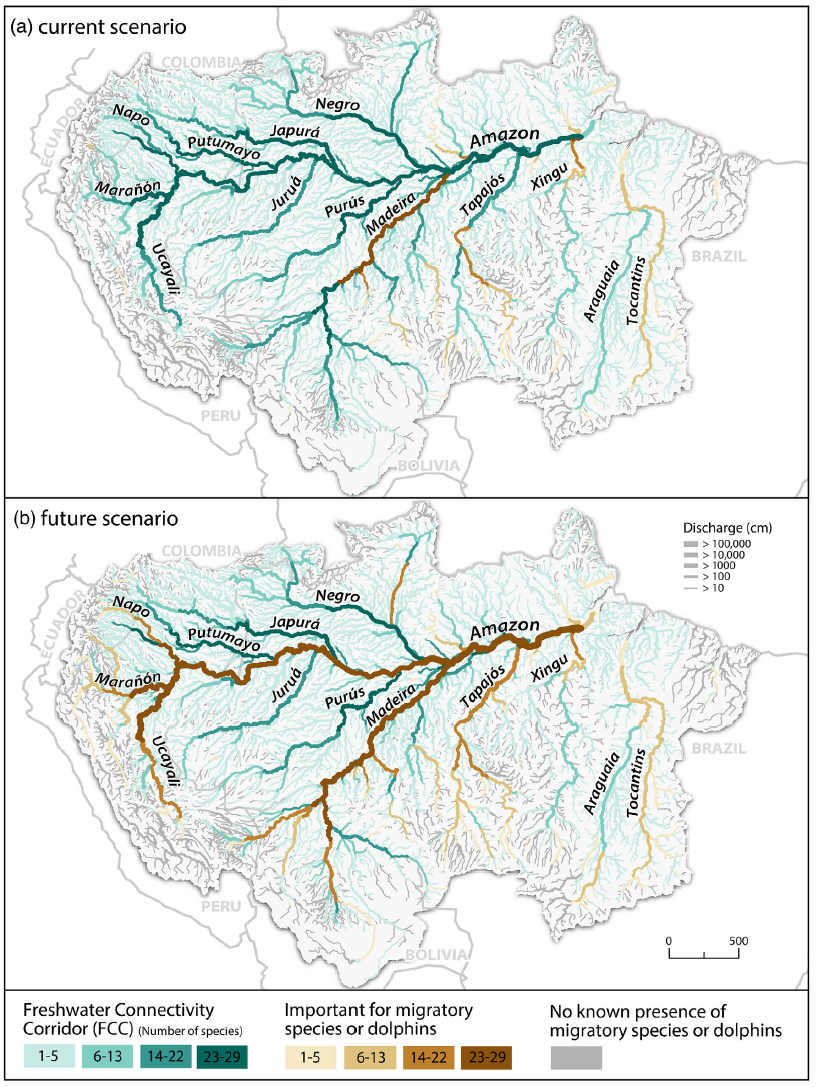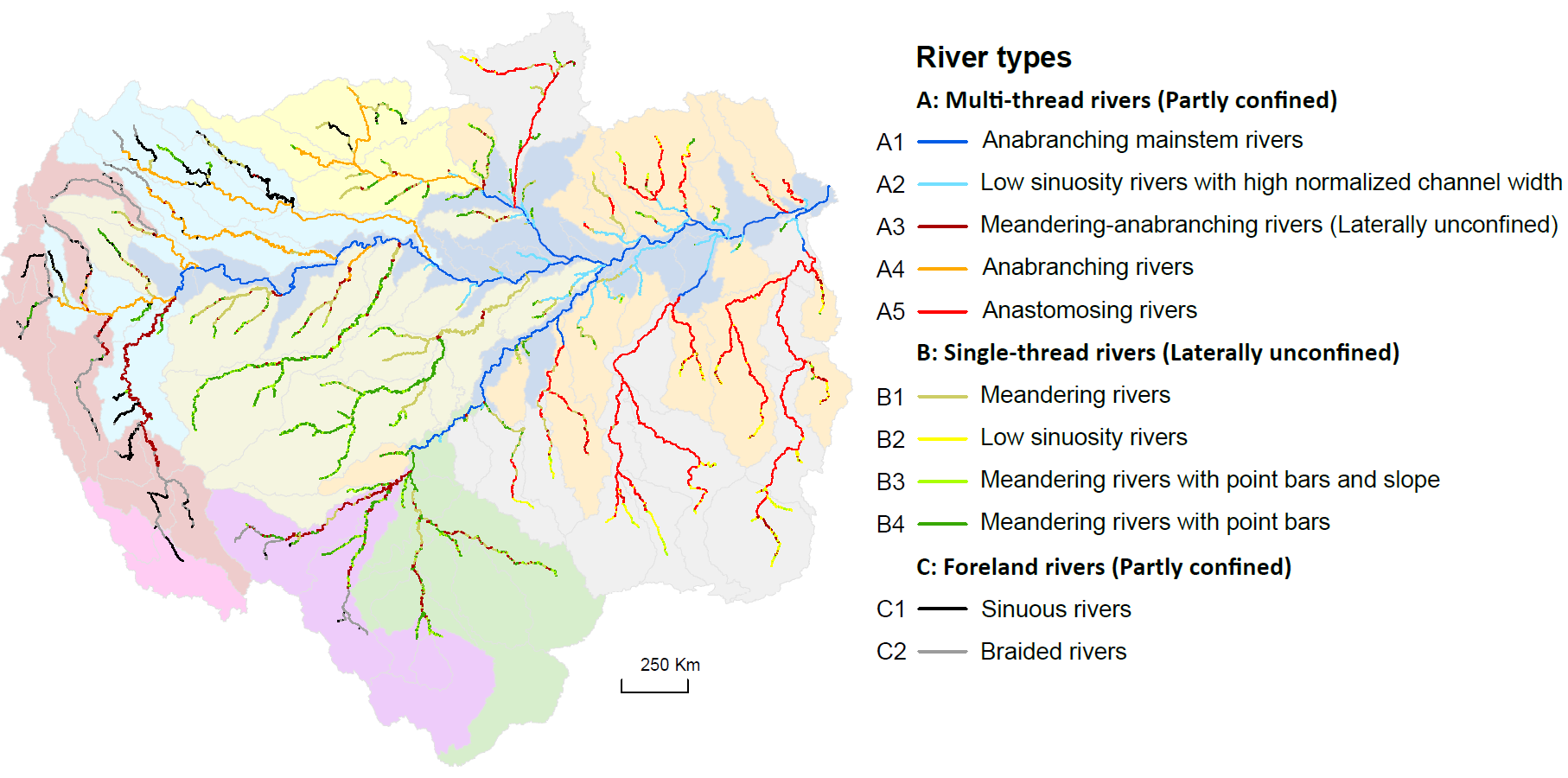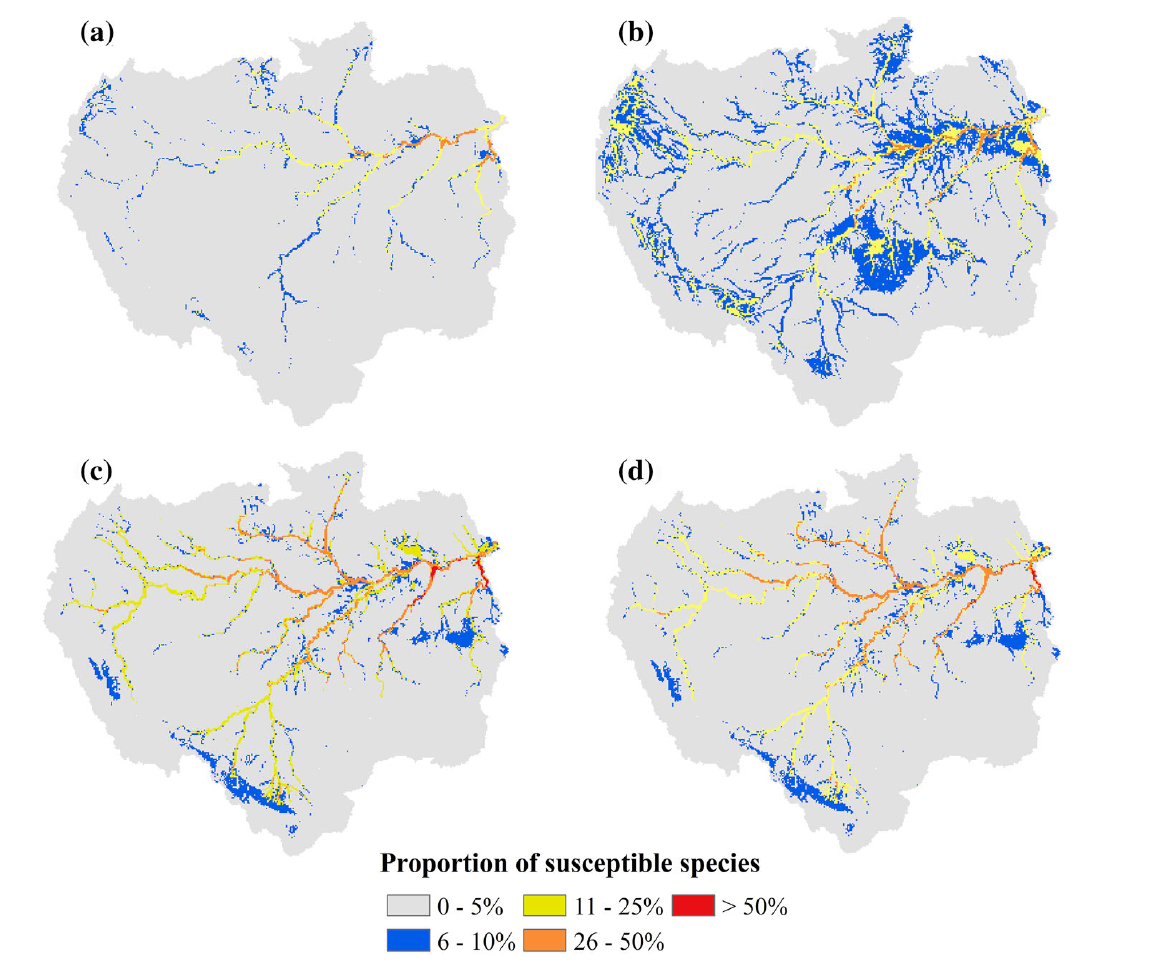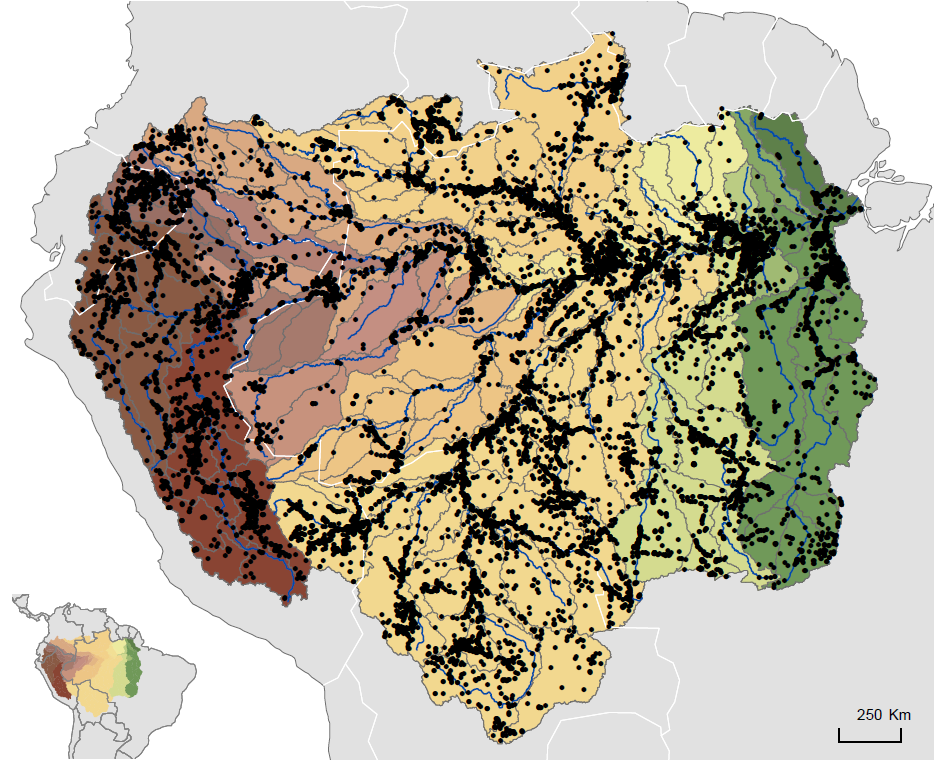Floodplain forests drive fruit-eating fish diversity at the Amazon Basin-scale
24 January 2025
The Amazon River Basin has Earth’s most extensive seasonally flooded floodplain forests. These ecosystems harbor communities of trees and animals adapted to prolonged flooding, including fruit-eating fish. When fish eat fruits, they often swallow intact seeds and move them away from maternal trees, contributing to natural forest regeneration. Nevertheless, floodplain deforestation, hydrological and climatic changes, and overfishing threaten this interdependency. In a basinwide analysis of fruiteating fish species richness patterns, we found floodplain forest extent, richness of tree species, and flood duration to be the most critical landscape and ecosystem features. We conclude that the long-term survival of fruit-eating fish and, in turn, the long-term sustainability of floodplain forests depend on fish accessing diverse and hydrologically functional floodplain forests.
See full text









